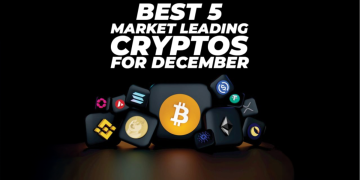Tokenization involves creating digital tokens on a blockchain that represent ownership or rights to a physical or digital asset. These tokens are strings of unique symbols that cannot be used to access the original asset or data directly. Instead, the sensitive data linked to the token is stored securely in what is commonly called a “vault.” Only the system that created the token can access the associated data, ensuring an additional layer of security.
This approach has been widely adopted to protect sensitive information such as credit card numbers and personal identifiers. Recently, tokenization has made its way into the world of alternative investments. Platforms designed for tokenized securities now enable businesses and developers to securely configure, issue, and manage these assets, creating new opportunities for investors and organizations alike.
Assets that were once out of reach for most people—such as fine art, rare collectibles, venture capital opportunities, and real estate—are now becoming more accessible to a broader range of investors. Here’s how tokenization is transforming this space in meaningful ways.
The Benefits of Fractional Ownership
One of the biggest benefits of tokenization comes from a concept called fractional ownership. This is a way to essentially share ownership of an asset with a group of people, each of whom will hold a portion of the larger whole. Think of it as not unlike ten people going in on purchasing a house together.
The immediate advantage of this is that it gives investors the flexibility needed to buy, sell, or even trade smaller portions of high-value assets. Can’t afford to buy an entire house? That’s okay because you can purchase what you can afford and still make money by adding it to your portfolio.
That, in turn, gives way to a much-needed level of diversification that many investors seek these days. When an investor puts their money into individual properties, they are essentially dealing with a “single point of failure” on each one. If they invest $100,000 in a property and the value diminishes significantly, that’s a bad investment. If they invest only $4,000 in that property, they are still poised to generate a significant return, but they’re largely protected if that one property fails. At the very least, they’re not out quite as much money. If they do this dozens of times as opposed to just one or two, they’re largely making the same return on investment with far less risk, thanks to diversification.
Fractional ownership also brings with it a shared set of responsibilities among all investors, thus relieving one of the major pain points that comes along with investing in property in the first place. Not only can this help dramatically reduce the individual burden for each investor, but it can also reduce operating expenses. If you’re investing in a piece of property with the intention of renting it out, you don’t have to worry about landlord/tenant relations yourself. You and your fellow investors have likely split the cost of finding a property management company to do precisely that.
None of this is to say that you can only achieve these benefits through tokenization in this context. It’s just that tokenization, by its nature, makes it far easier to pull off.
Increased Liquidity and Transparency
As stated, one of the major benefits of tokenization in this context comes in the increased liquidity that you get from something like fractional ownership. That’s far from the only example, however.
Tokenized assets that are traded on digital platforms are essentially able to operate 24 hours a day, seven days a week, 365 days a year. This is as opposed to all the traditional trading markets, which have very specific operating hours.
In terms of transparency, you get the major benefit of having immutable records. Once a transaction has been recorded in the blockchain, it literally cannot be altered – end of story. In terms of tokenization, this makes it much harder for instances of fraud to occur. As an investor, you’re also able to go through and look at the history of a token in meticulous detail. You also get access to the type of real-time data that you need to make the most informed decisions possible moving forward.
Another major benefit that you get from tokenization has to do with cross-border transactions. Because tokenization (and the blockchain in general) is inherently decentralized, it’s also borderless. This means that investors can communicate and collaborate with one another from anywhere in the world with an active Internet connection.
Not only does this immediately increase demand for tokens, but it also helps to drive liquidity as well.
Lowering Entry Barriers
Finally, one of tokenization’s biggest benefits is the far lower entry barriers compared to traditional investing.
Take transaction costs, for example. Tokenized transactions are just far less expensive to work with than going through something like a broker or a clearinghouse. This can lower initial transaction fees, which makes it easier (and more profitable) to focus on small trades, which makes it easier for virtually anyone to get in and begin the process.
The more people invest, the more opportunity there is in the marketplace. The more the marketplace expands, the higher everyone’s individual investments tend to go. It’s a great way to give power back to ordinary people who may have felt cut off from a more traditional system over the course of the last decade in particular.
In the end, it doesn’t matter whether you’re an institutional investor or an average person looking to expand your portfolio. Tokenization is absolutely transforming alternative investments to the point where there really is no “going back” anytime soon.
By keeping a few basic things in mind and by following the advice outlined above, you can navigate the emerging space with ease. This will put you on equal ground to some of the other more seasoned investors who may be competing for the same opportunities that you are – at which point there truly is no limit to what you’ll be able to accomplish.























